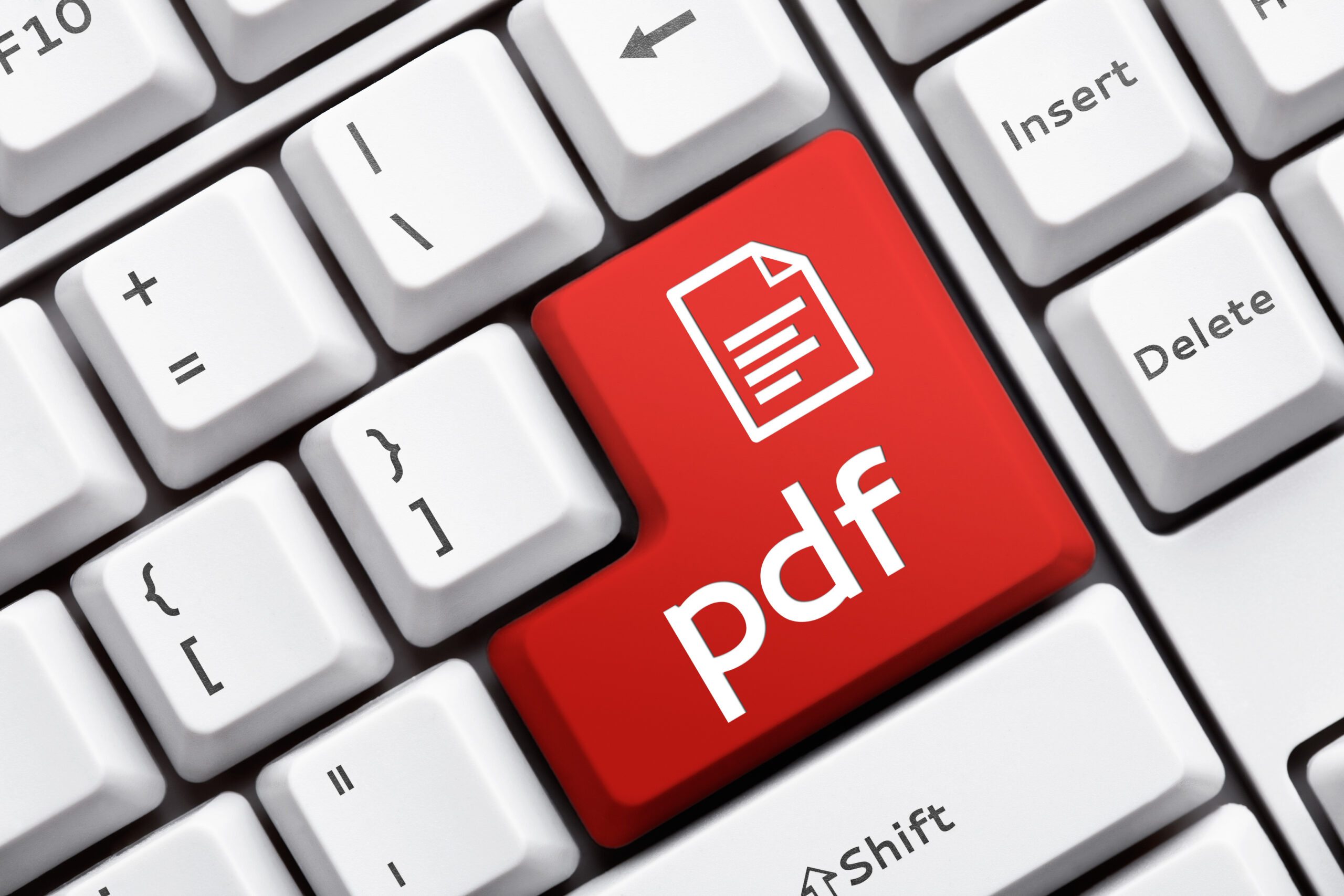PDF — What Is It and How or Why I Should Be Using It
The PDF file type stands for portable document format. The most important consideration of .pdf files is the fact that it is the international standard (ISO 32000) for electronic document and archiving file format. This means that years from now as applications change, data saved as a .pdf will still be readable by new applications, among other considerations. The .pdf file format can handle images, links, text features, and is a relatively small file size.
Some usage best practices.
- If you are saving data from a proprietary application (i.e., tax return program) and done making edits, make sure you store the data as a .pdf. The proprietary program may no longer be available in the future or due to changes be unable to open old files without issues.
- Email — most people don’t think about email applications as proprietary, but they are, and they are very poor at data management, archive, or searchable results. Programs like Adobe have the ability to archive multiple emails as a batch job into a single .pdf file that keeps the emails as individual items and makes them searchable. Most email programs have a save as .pdf option. Assuming you already have a folder structure for a client/subject, this allows you to save those critical CYA emails as files in an easily findable location.
- The Adobe Acrobat programs, Microsoft Office, and many others automatically install a virtual .pdf printer. This allows you to convert any data from a program with a print function to .pdf file format, with the layout and physical formatting automatically matching the original program print command.
Programs for creating and editing .pdf files.
- Microsoft and Apple Office Programs both have the ability to convert files to .pdf file types.
- Adobe is the gold standard for a PDF program. The Reader version is free and should be installed on all computers, smartphones, tablets, etc…. If you need some of the more advanced or editable features like encryption, install Adobe Standard or Adobe Pro.
- Adobe .pdf Binder vs. Adobe .pdf Portfolio — both are great options for archival of multiple files into Adobe searchable .pdf structure, but have different features.
- Video showing/explaining a portfolio/binder differences. Portfolio maintains native file association vs. a binder which converts everything to .pdf. (Link: https://youtu.be/nBsdNd3_uiE)
- At a cost savings, multiple off brand options are available but make sure you review the features carefully. Typically, they are less costly because they might only work with an internet connection (i.e., cloud based), features are missing, not as easy to use, or owned/operated by a foreign entity, etc…. Depending on your business, these considerations may or may not be acceptable. Here are a few options:
- Sodapdf (Link: https://www.sodapdf.com/)
- Wondershare (Link: https://pdf.wondershare.net/)
- PDF Filler (Link: https://www.pdffiller.com/)
- PDF24 (Link: https://tools.pdf24.org/en/)
- Sedja (Link: https://sejda.net/sejda-the-ultimate-online-pdf-editor-and-converter/)
As a best practice, I like to work my emails in subject related folders within the email structure. Upon completion of the project or during an annual archive, I will export the emails from an email folder to a .pdf binder or a portfolio (which allows me to keep all the attachments intact). That file is then saved with all the other non-email files/folder structure of the closed project. This keeps my email clean and manageable in size, retains email data in a file format that supports archive and search features, and allows typical backup file practices to capture former email content without needing any special actions/steps.

